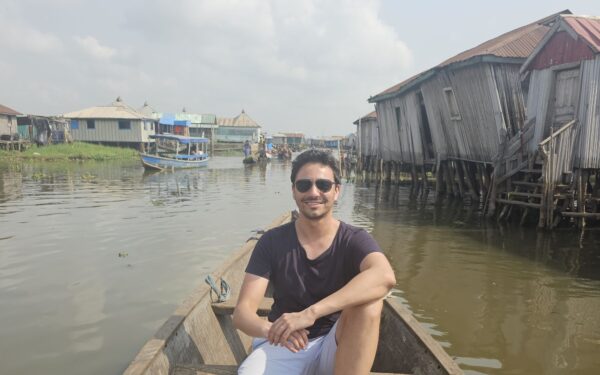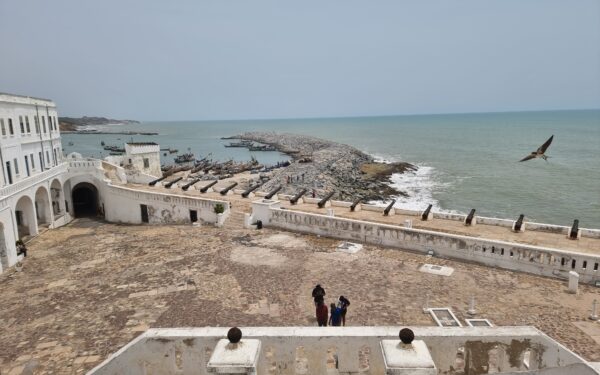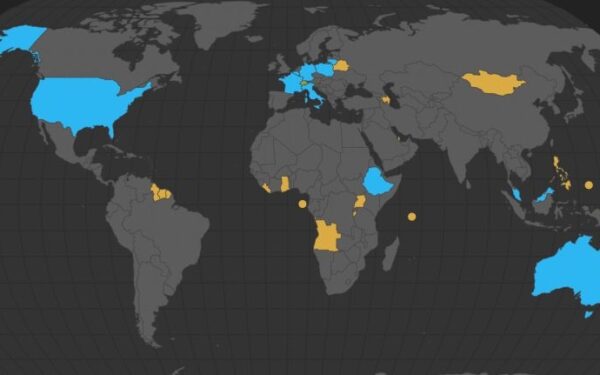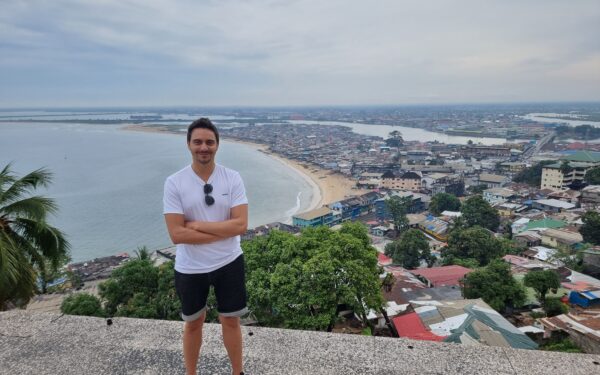Travel report: Côte d’Ivoire
Country ranking by area: #69
Country ranking by population: #54
Date of visit: January 2018
Leveling up: Traveling to West Africa
West Africa has the reputation of being the most difficult part in the world to travel. Violent crime, bribery/corruption, tropical diseases, terror, poverty and poor infrastructure are rather the rule than the exception. Having that in mind, I chose Abidjan, Lomé and Lagos as my first West African destinations. Abidjan and Lomé should be an easy start to this part of the world, while Lagos was considered as a challenge at the end of the trip.
Preparations
All West African countries are a high-risk malaria area and having a medication with you just for the emergency isn’t enough. It was the first time in my life that I had to take Malarone pills. Luckily, there weren’t any side effects.
Another preparation I did was refreshing my French skills, as most West African countries are francophone. So are Côte d’Ivoire and Togo. I had 9 years of French in school and lost almost all of it. Nevertheless, I managed to have good conversations with the locals during that trip. African-French is different from normal French. It’s much easier, as grammar isn’t that important there.
One more thing: I traveled with hand luggage only, as I didn’t want to travel with a big suitcase for 8 days only. I could stuff more than enough clothes in my small trolley. The only problem were the liquids, which are limited to one of these small plastic bags they provide at airports. It wouldn’t have been a problem in Africa though. No one really cares about the amount of liquids in Africa as long as all of them are not more than 100ml.
Abidjan – West Africa for beginners
Three nights in Abidjan, the economical capital of Côte d’Ivoire, were the start of my West Africa tour. I chose Abidjan for two reasons. First, the pictures of the city I found online impressed me. It didn’t look like the 3rd world but pretty modern. Second, Abidjan has the reputation of being more or less safe. I thought it wouldn’t be the worst idea to begin a West Africa trip in a city like that instead of in Bamako or Ouagadougou.
Abidjan looks exactly like the pictures you find online. It’s a modern city with numerous skyscrapers and roads in good conditions. Not what you expect to see in Africa. Needless to say that I liked it from the beginning.
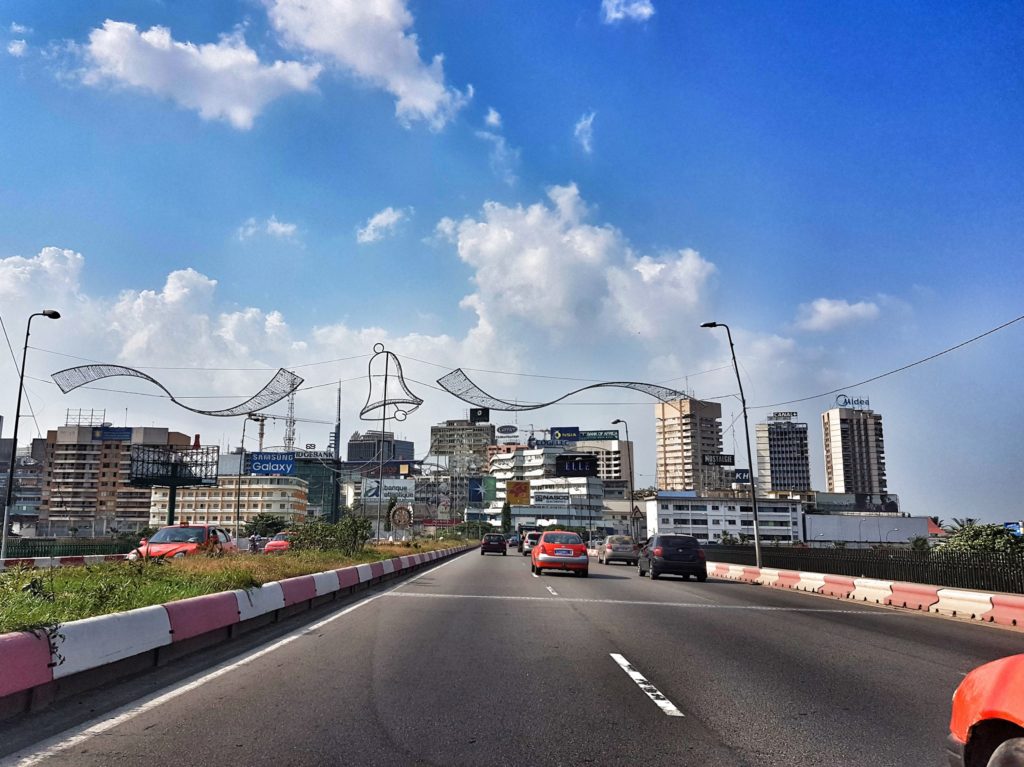
Things in Abidjan weren’t always nice though. Côte d’Ivoire had two civil wars in the new millennium, the first one from 2002 to 2007 and the second one from 2010 to 2011. Thousands of people died in both wars. I didn’t notice any signs of the civil wars such as destroyed houses in Abidjan, but you realize that these times are still present when you talk to locals. Today, Côte d’Ivoire is a peaceful country, but as history has shown violence can outbreak anytime again.

Abidjan, the economic powerhouse of Côte d’Ivoire, is also very… French. Although the Ivoirians would like to deny that, the country is highly influenced by the French. The currency is the West African Franc, the buildings look very French too (especially in other parts of the country like Grand Bassam) and the country’s cuisine has a lot of French elements. It goes without a saying that most restaurants in Abidjan serve French food.
I explored the city alone on the first day by walking down the streets of Le Plateau, Abidjan’s business district. It was a Sunday and the city seemed calm and peaceful. You can walk through most parts in Abidjan without getting in a dangerous situation. However, there are dangerous slums in this cities, but most people don’t leave the main districts Le Plateau, Zone 4 and Marcory anyway.
It didn’t take me long until I arrived at the main landmark of Abidjan St. Paul Cathedral is one of the largest cathedrals of the world and the second largest in Africa. I really liked the unique architecture of the building, but I even enjoyed more what happened in front of the church.
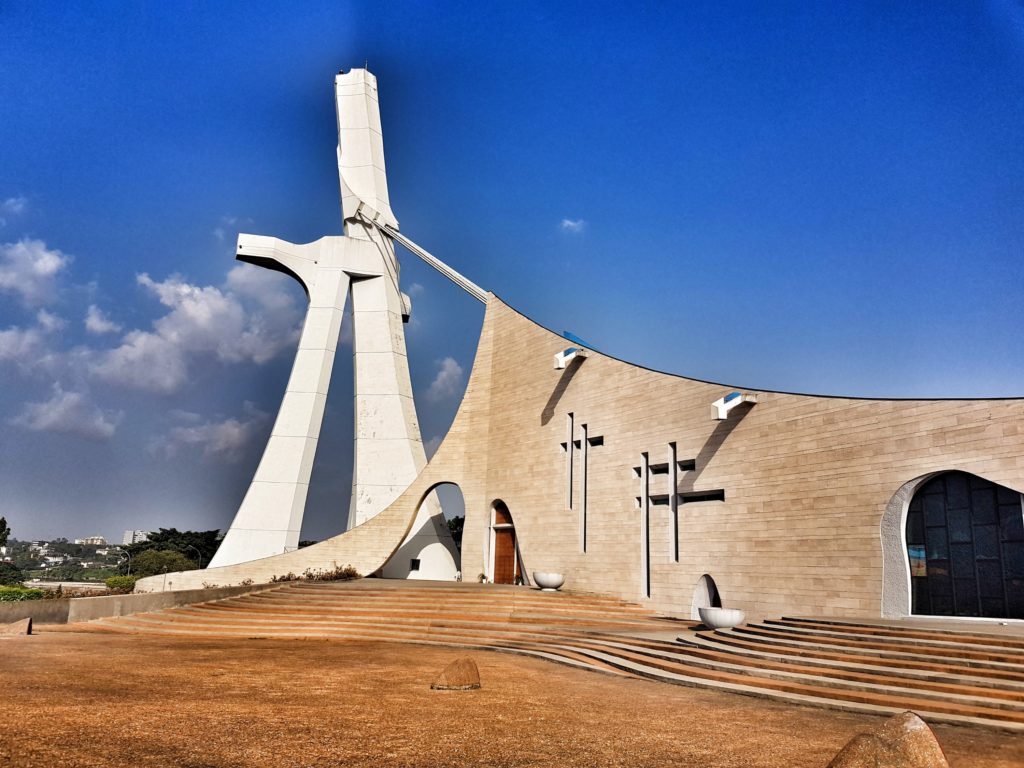
There was a group of young people and they high-fived me when I passed by. It turned out that they were from Ghana visiting the neighboring country. I must have fascinated them somehow, because what followed was one of the longest photo shootings I have ever witnessed. All of them wanted to take pictures with me so that I asked them if they could take a few with my phone too.
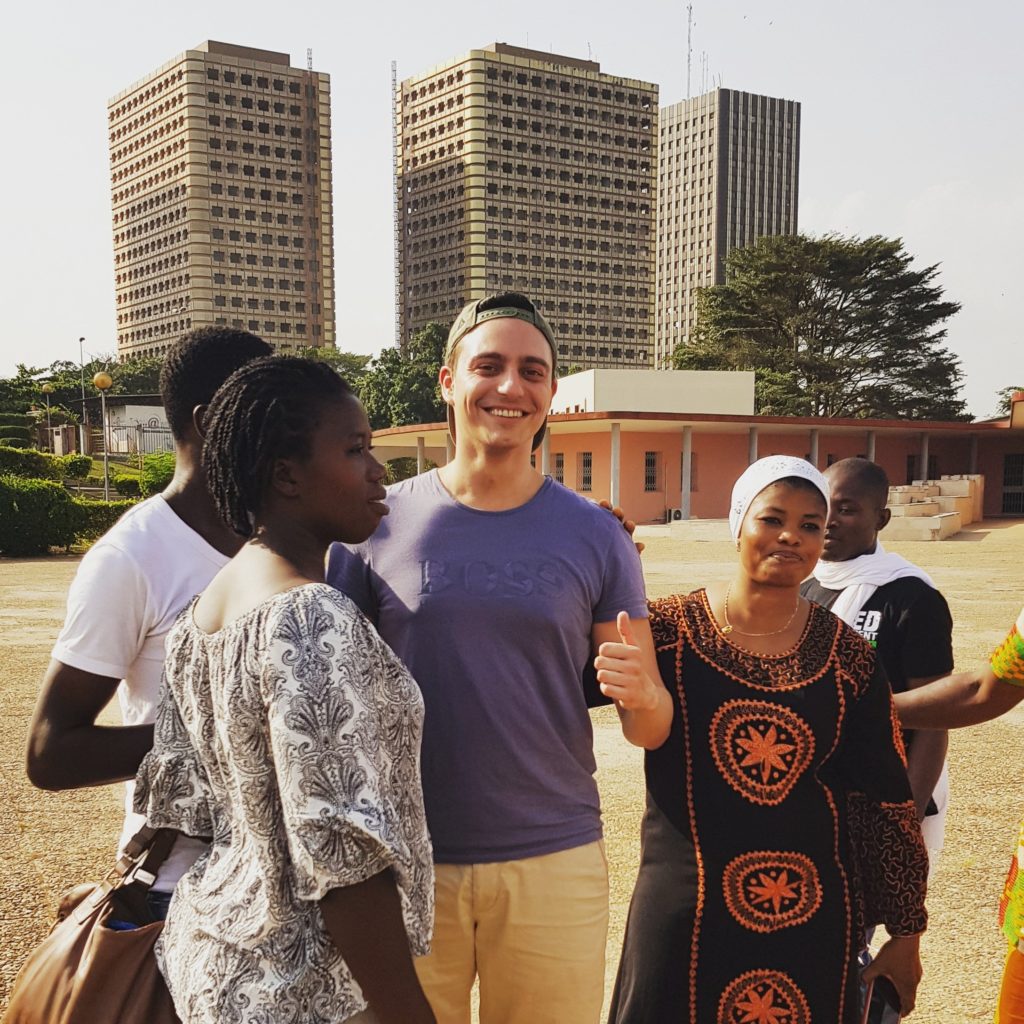
Exploring Abidjan with a local guide
I did not do much of sightseeing that day though, as I had booked a tour the day after. Dayo Williams was my tour guide, a Nigerian who moved to Côte d’Ivoire a long time ago. Dayo asked me a few days before if I prefer using a car or public transport. I chose the latter, because I thought that it would be more fun.
We took a taxi to our first stop: Musée des civilisations de Côte d’Ivoire. As soon as we arrived, we found out that the museum was closed that day for maintenance. Anyway, Dayo managed that we could enter by telling the front office lady that it was my last day in the country. The museum was okay. It exhibits masks, clothes and tools of the different tribes living in the country. However, it’s very small and we did not spend more than 20 minutes in it.
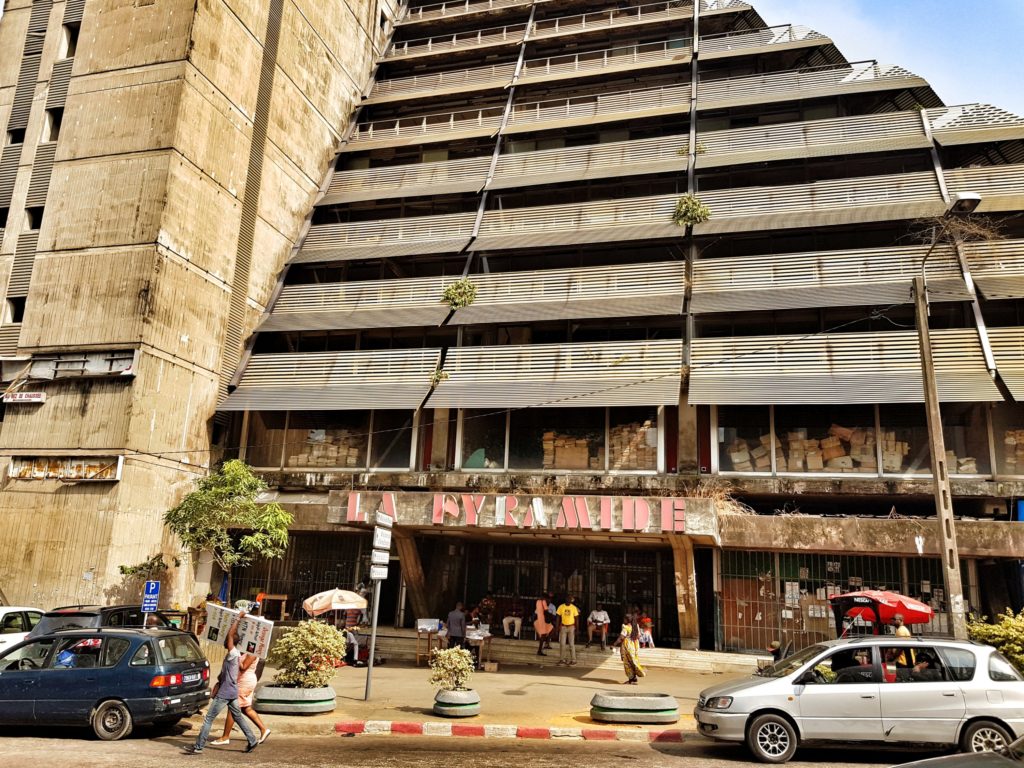
We headed to another “sight”, a weirdly constructed house called La Pyramide. It was built by an Italian architect and is one of the main attractions in Abidjan. To be honest, it’s not very spectacular, but Abidjan doesn’t have many sights and attractions, which makes the building a part of every sightseeing tour.
“Do you mind if I smoke a cigarette?” I asked Dayo. “Yes because smoking in public is forbidden in Côte d’Ivoire,” Dayo said. I have never heard that smoking in public was forbidden in a country, but as bribery is very common in this part of the world, I didn’t want to risk it. You hear a lot of stories about policemen looking to fine foreigners. I didn’t want to give them a reason.
I told Dayo that I had already visited St. Paul Cathedral so that we did not lose much time there, however, we entered the cathedral quickly. Dayo told me that I could do a trip to Yamoussoukro, the capital of Côte d’Ivoire, if I had time. As I was leaving the country the next day, I had to skip this idea. I didn’t have to skip our next sight though: the Plateau Mosque.
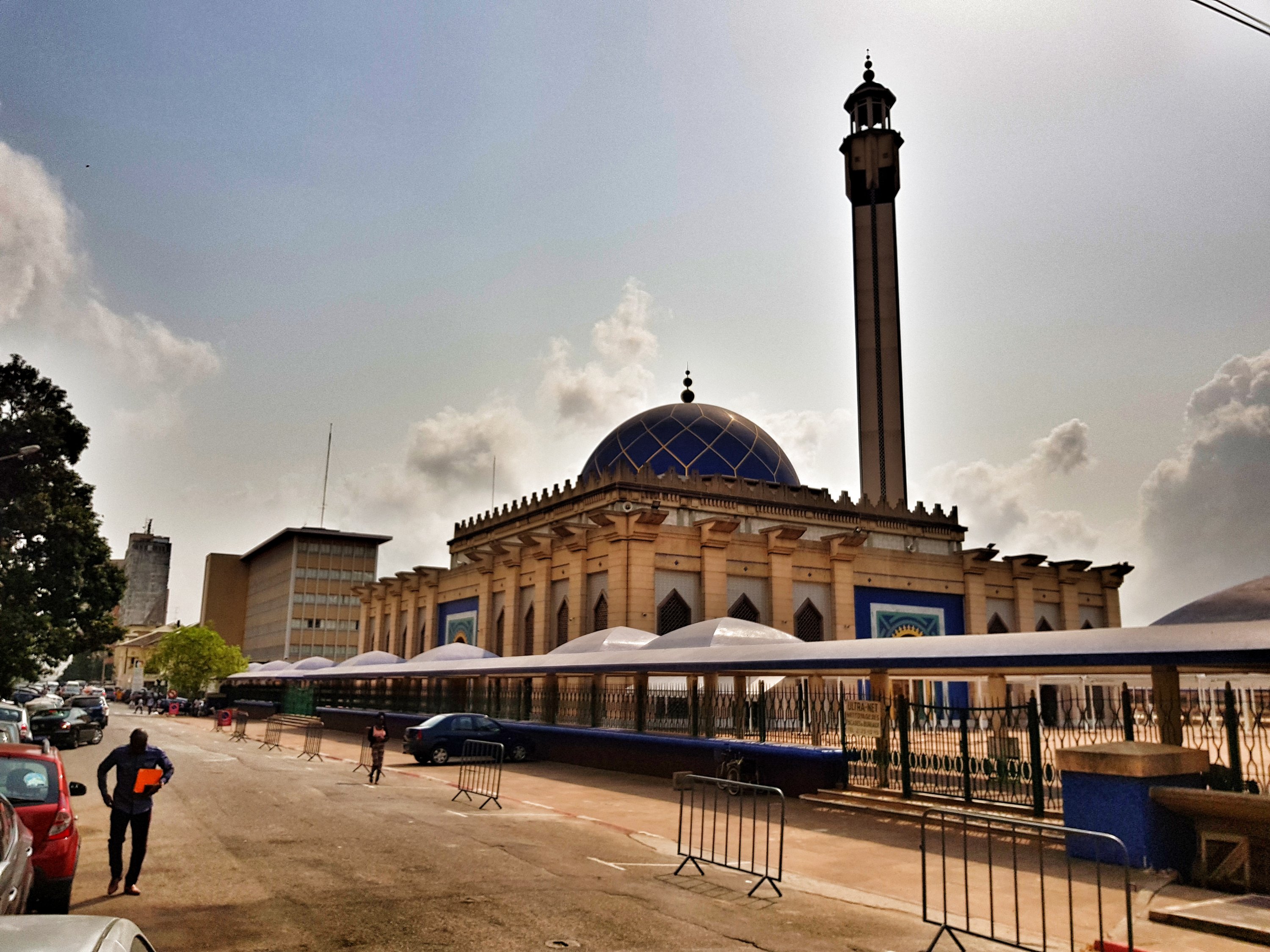
In Côte d’Ivoire, people are either Christians or Muslims. That’s why you have churches as well as mosques., however, I didn’t notice a huge religious influence when I looked at the people on the streets (I mean the people weren’t wearing religious dresses etc). In hindsight, I have to say that the Plateau Mosque and St. Paul Cathedral were the only really good sights in Abidjan. Both religious buildings look impressive and are worth a visit.
Plateau Mosque turned out to be a huge one. We couldn’t enter the mosque, as it was closed when we arrived. That was fine to me, I usually prefer seeing religious buildings from the outside. The mosque looked beautiful, especially the doors were very nice.T here weren’t many people around the mosque though, and I neither saw many people in St. Paul Cathedral.
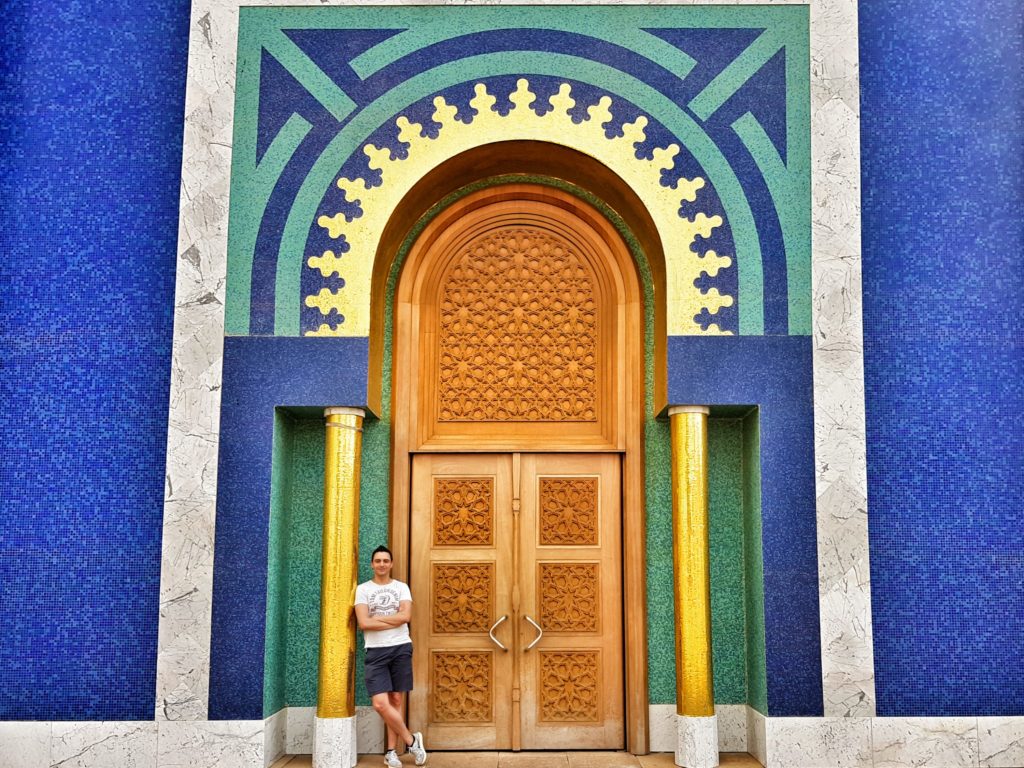
Grand Bassam and the slum
We took a taxi from the mosque to Grand Bassam, the first capital of Côte d’Ivoire. It’s a 45 minute ride from Abidjan and the taxi cost about 20 Dollars. Grand Bassam is a small, laid-back town with beautiful beaches and resorts. Tourists go rather to this place than to Abidjan.
Dayo and I visited another museum after the arrival, in which we got a history lesson about the colonization of Côte d’Ivoire, before we headed to a restaurant for lunch. I was very curious about the African food I would get there and it didn’t disappoint. I had chicken in a hot chili sauce with rice. Dayo had the same dish but with fish instead of chicken.
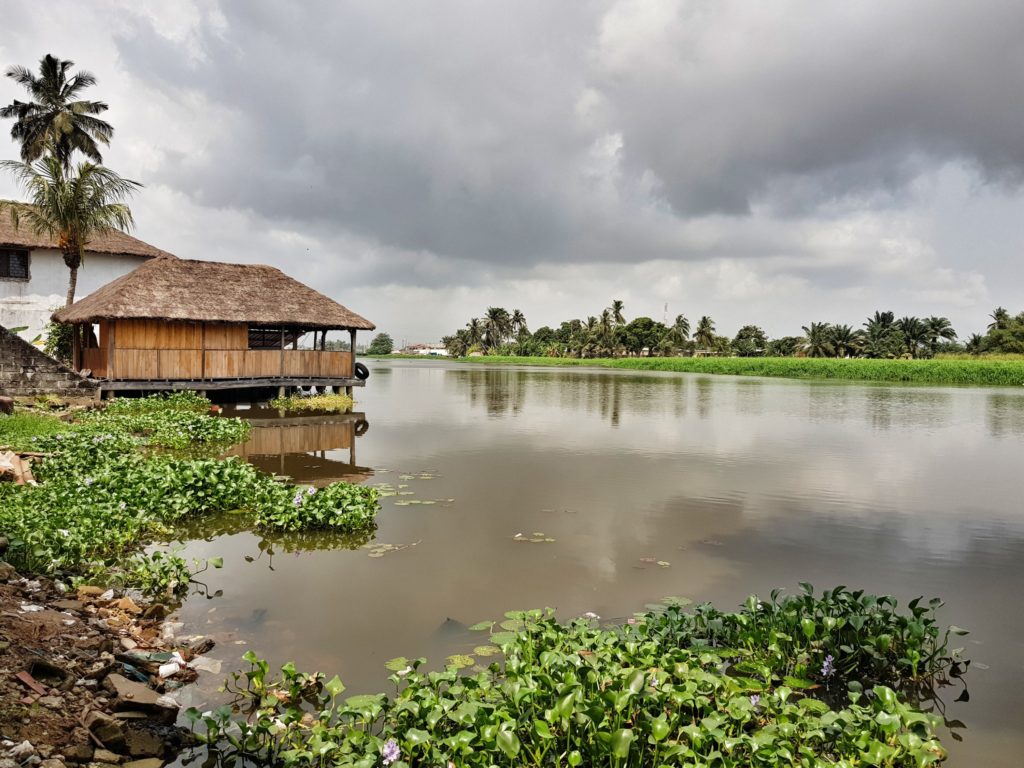
Grand Bassam looked definitely more African than Abidjan, which is a more or less westernized city. Grand Bassam is not an urban city but more like a small rural village. The small size of the town also makes it easy to get from one point to another. The beach was just a short stroll away from the restaurant where we had lunch.
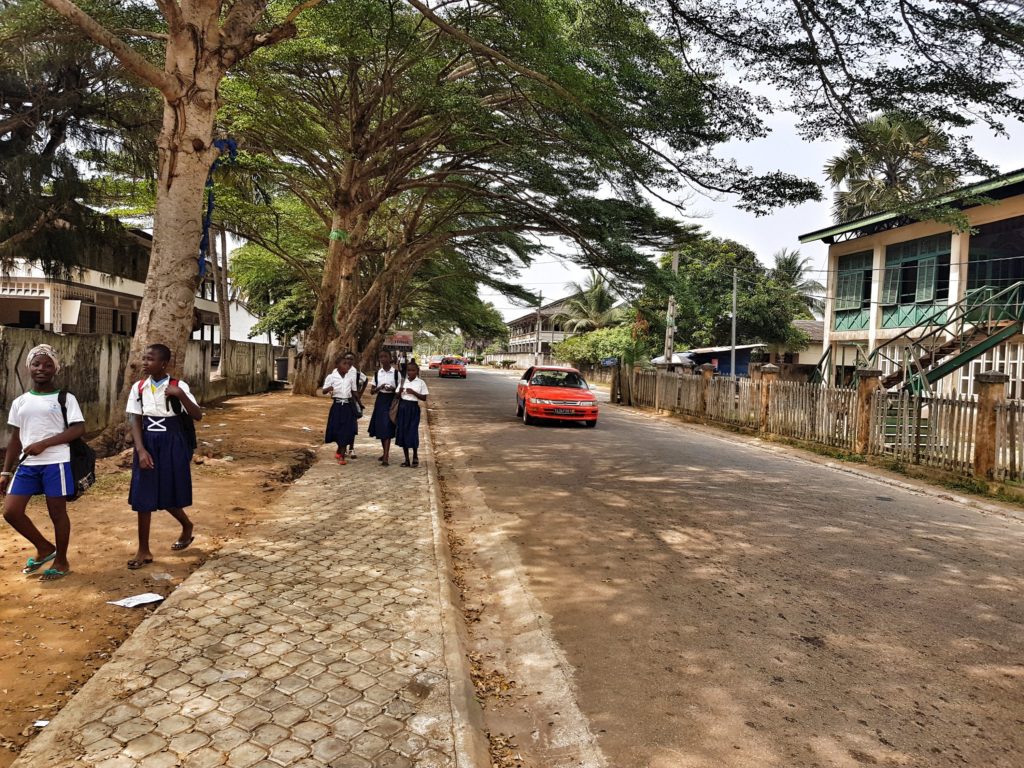
Grand Bassam was also the first capital of the country and the town made it to the news because of a terror attack at a famous beach resort two years ago. An Al-Qaeda group attacked a hotel in Grand Bassam and killed 18 people, 15 civilians and 3 special force soldiers. It was the last terror attack the country suffered to this date but also one of the worst.
We were sitting exactly at the bar of the hotel that was attacked in 2016, having coffee and watching some young fellas dancing at the beach. The beach in Grand Bassam was actually very nice, however, you can’t swim in most parts of West African countries as the currents of the Atlantic ocean are too strong. I didn’t see many people in the water therefore.
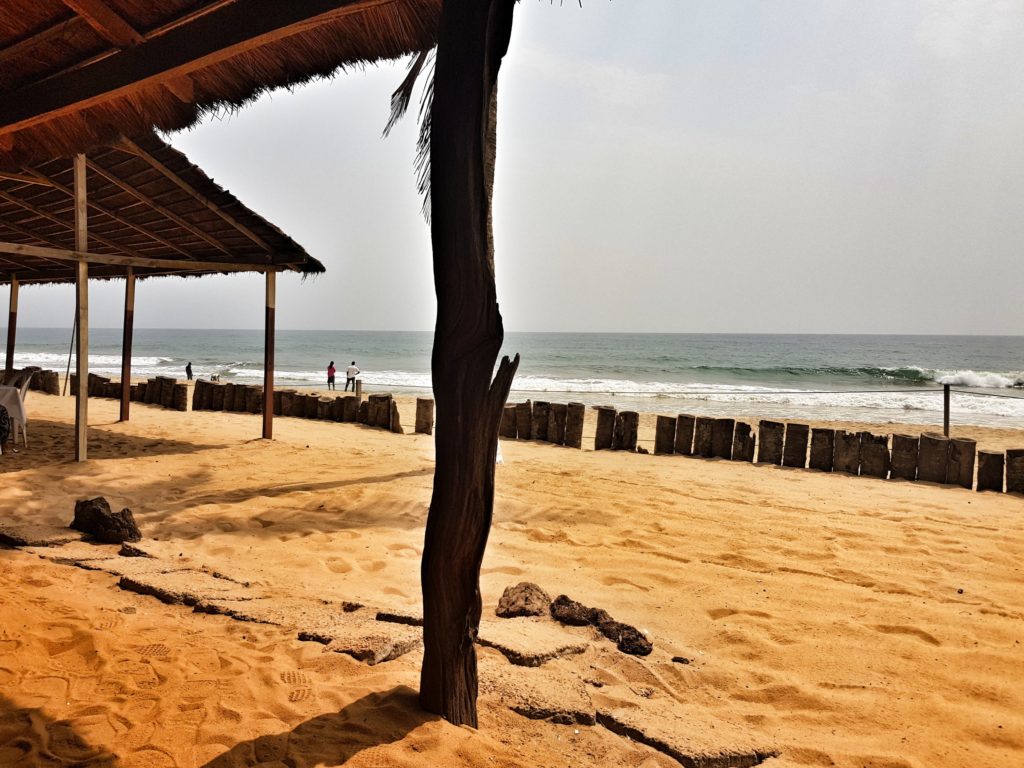
From laid-back Grand Bassam we took minibus back to Abidjan. We were about 14 people in a cramped vehicle and it somehow reminded me of Ethiopia, where I was sitting in a minibus with even more people. This is Africa.
When I organized the tour with Dayo, I also asked him to show me the poorer areas. I wanted to see the everyday life of the locals, and I mean of all the locals and not only the middle class. Therefore, we headed to Koumassi, a huge slum east of Marcory and Zone 4. According to Dayo, this slum is not a dangerous one, although he wouldn’t advise a tourist to go there without a local.
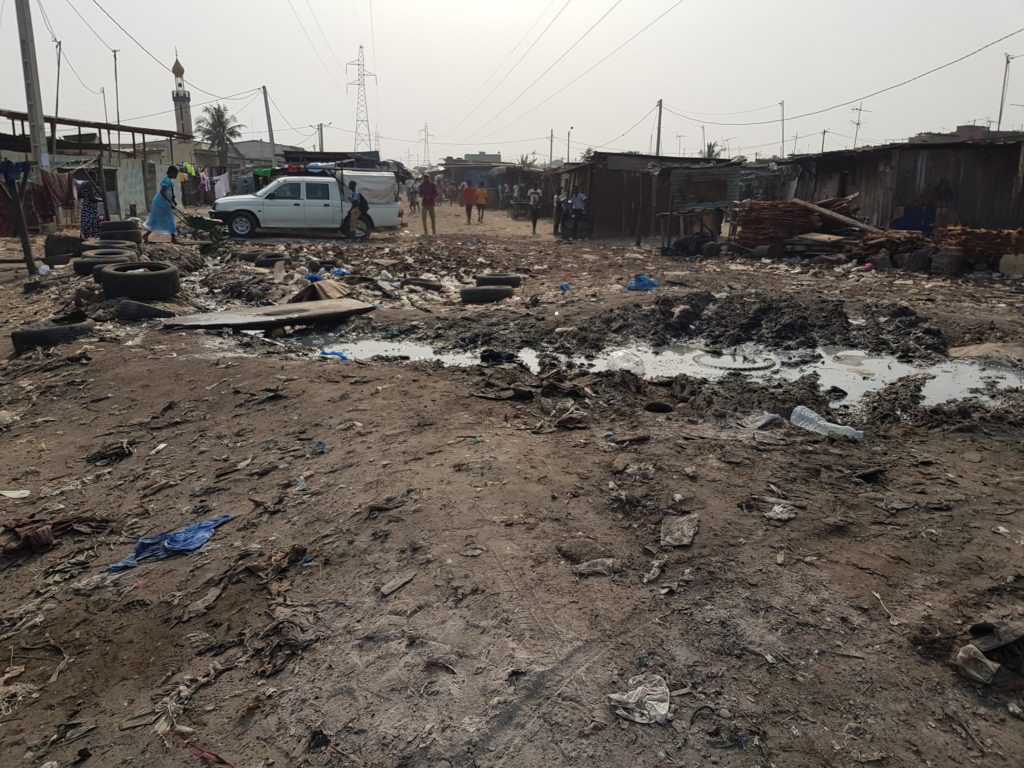
Living conditions must be poor in Koumassi, as there was so much trash everywhere and many houses don’t have electricity and water. Some parts of the slum looked really terrible, but many people joyfully greeted me, especially the children. It was a good decision that we went there. It wasn’t about voyeurism, but I want to see the real world when I travel. Koumassi definitely showed me that and proved that not every part of Côte d’Ivoire is developed. Dayo also informed me that there are slums in the north of the city that are worse and also no go areas even for local people.
My travel experience in Côte d’Ivoire
Côte d’Ivoire was the ideal country for the first trip to West Africa. It’s more or less safe, it’s modern, it’s clean, infrastructure is better than you’d expect in Africa, but still not touristy like other countries (I don’t think that there is a very touristy country in West Africa though). If you just look at Abidjan, you would probably say that this is one of the best developed parts in Africa. The people in Côte d’Ivoire were also nice and I didn’t worry a single moment in this country.
In hindsight, hiring a guide like Dayo was an excellent choice. I don’t think that one needs a guide in Abidjan, but he also showed me the poorer parts of the city, which I couldn’t have seen without him. In the end, the trip to Côte d’Ivoire wasn’t the most spectacular one compared to other African countries I have visited. But I just needed a bit patience, as the spectacular things were yet to come in country #66: Togo and country #67: Nigeria.
Find the travel reports of the other countries I’ve visited here!
